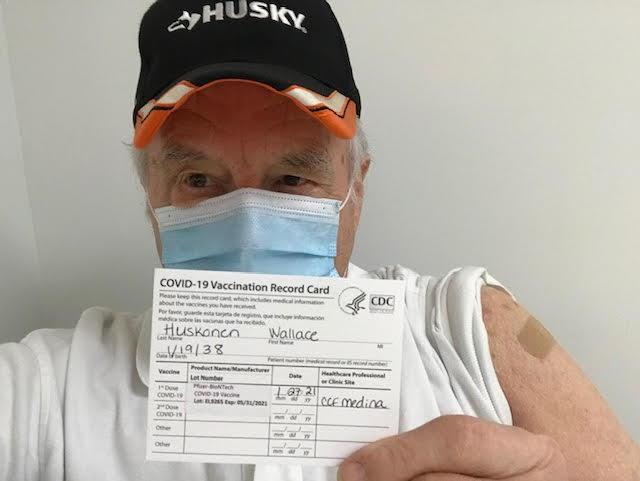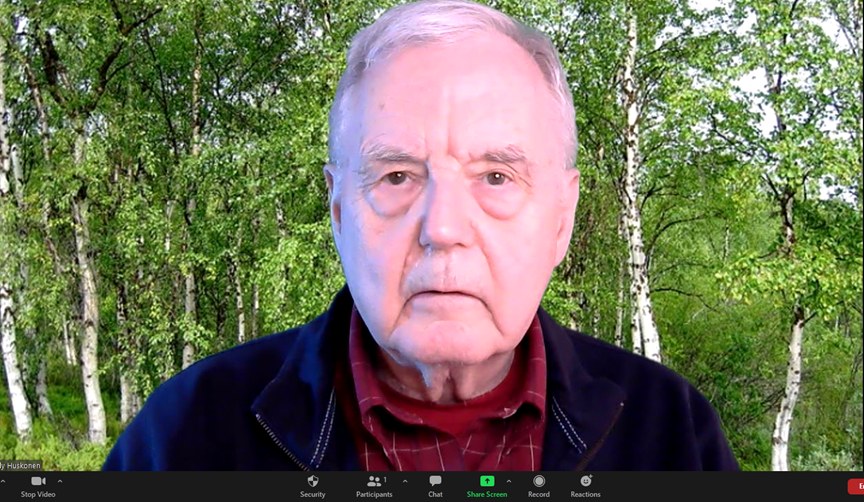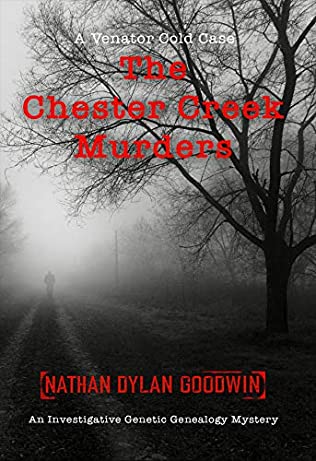I am a subscriber to MyHeritage.com, a genealogical database provider that has helped me connect with cousins in Finland, from which my paternal grandparents emigrated to America in 1902 and 1903. I am a subscriber because MyHeritage, which is based in Israel, has aggressively marketed its services in Europe, including Finland.
Yesterday (24 Feb 2021), Business Wire carried the announcement that MyHeritage is being acquired by a private equity firm in San Francisco, CA. The announcement issued jointly by MyHeritage and Francisco Partners follows:
TEL AVIV, Israel & LEHI, Utah & SAN FRANCISCO, Calif.–(BUSINESS WIRE)–MyHeritage, the leading global service for discovering your past and empowering your future, announced today that Francisco Partners, a leading global investment firm that specializes in partnering with technology businesses, has signed a definitive agreement to acquire the company. The financial terms of the transaction were not disclosed.
“We are looking forward to partnering with Gilad and the entire MyHeritage team to help drive market expansion for the company.”
Since 2003, MyHeritage has pioneered a new approach to discovering family history, making it easier and more accessible to millions of people around the world. Founder-led and fueled by a deep-seated passion for genealogy and a commitment to innovation, MyHeritage has built a successful, subscription-based global enterprise. Powered by unique and proprietary technologies, the MyHeritage platform is currently used by 62 million users worldwide and is available in 42 languages, which is a testament to the company’s international reach and diverse user base. MyHeritage users have collectively created more than 58 million family trees.
Making History
MyHeritage has invested heavily in developing technologies designed to help users make breakthrough discoveries in their family history research. The company amassed an extensive database of 13 billion historical records, including exclusive collections from many countries. The platform’s many features include world-class tools for colorizing and enhancing historical photos that are based on artificial intelligence.
“When I founded the company from my home eighteen years ago, I had a clear vision that drove me, and continues to drive me today – to make family history discovery easier using technology and to unlock the fun in genealogy: the human pursuit that bonds people,” said Gilad Japhet, Founder and CEO of MyHeritage. “With the help of an excellent and dedicated team, years of hard work, and with constant technological innovation, we created new and exciting ways for people to learn about their origins. In Francisco Partners we see a true partner for our journey ahead, not only demonstrated by the trust they are placing in our company through this acquisition, but in their desire for us to remain true to our vision by continuing along our path and helping us do what we do best – putting our users first and giving them life-enriching, and sometimes life-changing, experiences. This move will enable us to reach new heights, invest more resources in creating greater value for our users and to reach a larger audience. We’re incredibly excited for this next chapter in our company’s evolution.”
“By leveraging our operational expertise, market resources and strong industry networks, we believe Francisco Partners is uniquely positioned to help MyHeritage accelerate its vision for growth. We are deeply impressed by the incredible achievements and relentless determination of Gilad, a visionary leader in genealogy who has grown the company from a start-up to a profitable global market leader,” said Eran Gorev, Francisco Partners‘ President of Israel & Senior Operating Partner, who will join the MyHeritage board of directors upon the closing of the transaction. “We are looking forward to partnering with Gilad and the entire MyHeritage team to help drive market expansion for the company.”
“With its unmatched presence across Europe combined with its development of unique, cutting-edge technologies, MyHeritage is an ideal investment for Francisco Partners. The company has proven itself to be an innovation powerhouse through its robust subscription business, unique positioning, advanced technology portfolio, and international focus that has enabled it to build a superior user experience,” said Matt Spetzler, Co-Head of Europe and Partner at Francisco Partners, who will also join the MyHeritage board upon closing. “Francisco Partners shares MyHeritage’s vision for growth as well as its intense commitment to ensuring the privacy of its users. The users’ personal data is an extremely important priority and we will work together with MyHeritage to expand its already strong privacy framework going forward.”
Since its inception, MyHeritage has raised $49 million in 5 rounds of financing, the last of which took place in 2012, after which the company turned profitable. The company’s investors have included private investors Yuval Rakavy and Aviv Raiz, who invested in the company in 2005 and have continued to support it ever since, as well as Accel, Index Ventures and Bessemer Venture Partners. With their support, the company accelerated its growth and completed 11 strategic acquisitions.
Some of the company’s current investors will be re-investing into the company alongside Francisco Partners, including HP Beteiligungs GmbH, Yuval Rakavy, the company’s founder and CEO Gilad Japhet, and independent investor Gigi Levy.
Doing Good
MyHeritage is a company that not only believes in doing well, but also in doing good, and seeks opportunities to use its tools and services to leave a profound positive impact on the world. Its pro bono initiatives include DNA Quest, a program that helps adoptees reunite with their biological families by providing thousands of free DNA tests to select applicants, and Tribal Quest, an initiative that helps to document the family histories and cultural heritage of remote tribes around the world. In addition, with the onset of the coronavirus in 2020, MyHeritage established a COVID-19 testing lab in Israel in an effort to save lives and help Israel fight the pandemic.
Committing to Lead in Privacy
MyHeritage takes a best-in-class approach to user privacy and does not sell or license personal data. Under MyHeritage’s partnership with Francisco Partners, this commitment will be further strengthened and users will benefit from enhancements to the company’s privacy framework. As a first step in this strategy, MyHeritage will shortly update its privacy policy to include the unequivocal prohibition for the company to license or sell genetic data to any 3rd party. These updates will be highly unique amongst the larger genealogy and genetic DNA industry and are a testament to the commitment both MyHeritage and Francisco Partners share to privacy and consumers.
Goldfarb Seligman acted as legal advisor and J.P. Morgan acted as exclusive financial advisor to MyHeritage on the transaction. Meitar and Fried Frank advised Francisco Partners. The transaction is subject to customary regulatory review.
About MyHeritage
MyHeritage is the leading global discovery platform for exploring family history. With billions of historical records and family tree profiles, and with sophisticated matching technologies that work across all its assets, MyHeritage allows users to discover their past and empower their future. MyHeritage DNA is one of the world’s largest consumer DNA databases, with 4.8 million customers. MyHeritage is the most popular DNA test and family history service in Europe. Since 2020, MyHeritage has also been home to some of the world’s best AI technologies for enhancing and colorizing historical photos.
About Francisco Partners
Francisco Partners is a leading global investment firm that specializes in partnering with technology and technology-enabled businesses. Since its launch over 20 years ago, Francisco Partners has invested in more than 300 technology companies, making it one of the most active and longstanding investors in the technology industry. With more than $25 billion in assets under management, the firm invests in opportunities where its deep sectoral knowledge and operational expertise can help companies realize their full potential. For more information on Francisco Partners, please visit www.franciscopartners.com




Recent Comments